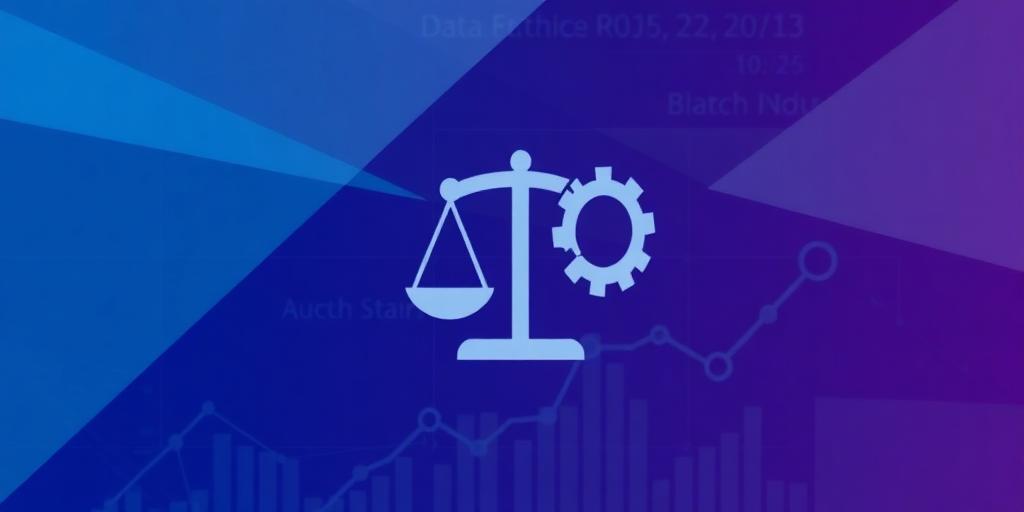The Ethics of Data Science: Navigating Bias, Fairness, and Transparency
Data science, a discipline at the nexus of mathematics, statistics, and computer science, has unequivocally reshaped industries and societies. From personalized recommendations to critical decision-making in finance and healthcare, its pervasive influence is undeniable. Yet, with this transformative power comes a profound ethical imperative. As practitioners and stakeholders, we must confront the inherent challenges of bias, fairness, and transparency within algorithmic systems, ensuring that innovation serves humanity equitably and responsibly. This discourse delves into these core ethical pillars, offering a framework for responsible data practices.
The Inescapable Shadow of Algorithmic Bias
Bias, in the context of data science, refers to systemic and repeatable errors in a computer system's output that create unfair outcomes, such as favoring one group over others. This is not merely a technical glitch; it reflects and often amplifies existing societal inequalities. The sources of algorithmic bias are manifold and insidious:
- Historical Bias: Data collected from past human decisions or societal structures, which may inherently contain prejudices. For example, a hiring algorithm trained on historical data might perpetuate gender or racial imbalances if those biases were present in past hiring practices.
- Selection Bias: When the data used to train a model does not accurately represent the real-world population it is intended to affect. This could stem from incomplete data collection or non-random sampling methods.
- Measurement Bias: Inaccuracies or inconsistencies in how data is collected or measured, leading to skewed representations.
- Algorithmic Bias: Introduced by the choice of algorithm or its configuration, such as objective functions that inadvertently disadvantage certain groups.
The consequences of unchecked bias are severe, ranging from discriminatory credit scoring and judicial sentencing to biased medical diagnoses and targeted advertising that reinforces stereotypes. Mitigating bias requires a multi-faceted approach, starting with rigorous data auditing and diverse data acquisition.
Defining and Achieving Algorithmic Fairness
While often used interchangeably, fairness is distinct from bias. Bias describes the error; fairness refers to the desired outcome—an equitable treatment or impact across different groups. The challenge, however, lies in defining "fairness" itself, as there is no single, universally accepted mathematical definition. Diverse interpretations include:
- Demographic Parity: Ensuring that the positive outcome rate is equal across different groups.
- Equalized Odds: Requiring equal true positive rates and false positive rates across groups.
- Individual Fairness: Treating similar individuals similarly.
The critical insight is that satisfying all fairness criteria simultaneously is often mathematically impossible, a concept known as the "fairness impossibility theorems." Therefore, practitioners must make explicit choices, aligning the chosen fairness metric with the specific application's societal goals and legal frameworks. Achieving fairness necessitates proactive measures such as re-sampling, re-weighting, and algorithmic adjustments that incorporate fairness constraints during model training.
The Imperative of Transparency and Explainability
Transparency in data science refers to the ability to understand how an AI system arrives at its decisions. This encompasses both interpretability (understanding the internal workings of a model) and explainability (providing human-understandable reasons for a model's output). The emergence of complex "black box" models, such as deep neural networks, has amplified concerns about their opaque nature.
The lack of transparency is problematic for several reasons:
- Accountability: Without understanding how a decision was made, assigning accountability for errors or biases becomes challenging.
- Trust: Users and affected individuals are less likely to trust systems they cannot comprehend.
- Debugging and Improvement: It is difficult to identify and rectify issues in a model if its decision-making process is inscrutable.
- Regulatory Compliance: Emerging regulations, such as GDPR's "right to explanation," necessitate greater transparency.
Techniques like SHAP (SHapley Additive exPlanations) and LIME (Local Interpretable Model-agnostic Explanations) are critical tools for post-hoc explanation, providing insights into feature importance and individual prediction justifications. Developing intrinsically interpretable models, where possible, also remains a vital research area.
Towards Responsible Data Science: Practical Steps
Addressing bias, fairness, and transparency is not a theoretical exercise but a practical imperative. Responsible data science demands:
- Diverse and Representative Data: Prioritizing the collection of high-quality, diverse, and representative datasets.
- Ethical Review and Impact Assessments: Establishing interdisciplinary review boards to assess potential ethical risks before deployment.
- Continuous Monitoring and Auditing: Implementing ongoing systems to detect and correct algorithmic drift and emergent biases in deployed models.
- Interdisciplinary Collaboration: Fostering dialogue among data scientists, ethicists, legal experts, and social scientists.
- Stakeholder Engagement: Involving affected communities in the design and evaluation processes to ensure systems meet their needs and values.
Conclusion
The ethical dimensions of data science are not peripheral considerations but fundamental pillars upon which trustworthy and beneficial AI systems must be built. Navigating the complexities of bias, fairness, and transparency requires a steadfast commitment to rigorous methodology, continuous learning, and a profound sense of social responsibility. By proactively integrating ethical frameworks into every stage of the data science lifecycle, we can harness the transformative potential of data for the collective good, ensuring that technological progress genuinely serves humanity's best interests.









